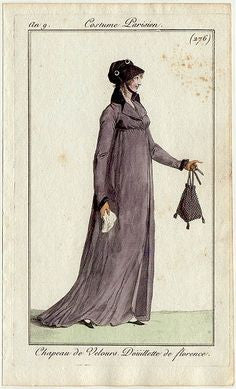
Another Reticule Rescue
A year ago I bought this lovely, antique silk reticule. This image is from the seller's listing and is used with permission:
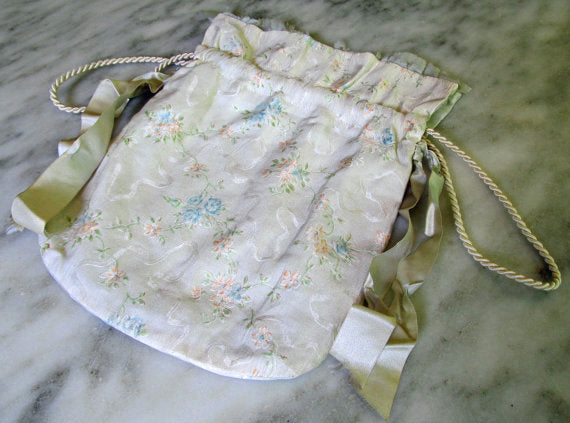
The upper lining where the drawstrings pull through was completely shattered. The seller was forthcoming. I knew what I was getting into. Here's another of Kelly's photos:
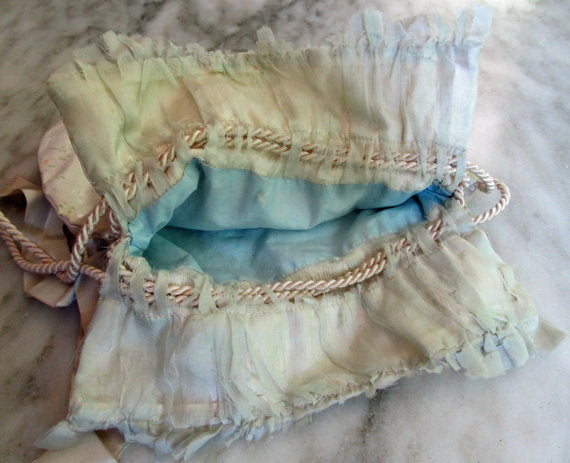
But you know me and potentially repairable old things. They are my version of lost puppies, continually following me home.
The reticule went into the "big box of things to fix some day," and sat, occasionally glaring at me when I reached in for another puppy. I couldn't do anything until I had an appropriate lining fabric. I knew one would turn up eventually.
So remember this fantasy of an 1850s dress, which (for a time) I'd hoped to be able to wear?

The idea was to bridge the very wide gap (on me) between bodice and skirt with a very wide belt. I bought a tall antique buckle on Etsy, and a "Delicious Antique Silk Satin Remnant in Baby Pink" on eBay.

Long story short, I couldn't make it work without harming the dress, which I sold. But I still had the silk. It hadn't really worked with the dress, but coordinated nicely with the reticule.
I tore away the shattered chiffon lining, wondering why someone would have used such sheer fabric to house drawstrings. I hesitated before snipping the original, tiny, hand stitches. But my mom warned it would be too bulky if I left them.
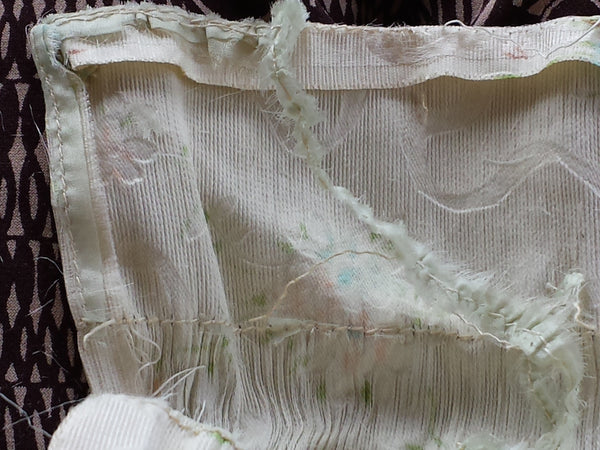
I liked how whoever made it had cleverly hidden the raw ends of the drawstrings behind ribbon bows at either side:

It took a long time to remove the stitches. At last I was ready to place the new lining. But I didn't have any matching thread. Isn't that always the case? Time out for a trip to my local quilt shop for 100% silk thread.
I tried to be neat, without making myself crazy. I worked from the exterior, trying to place the new stitches in the existing holes. It looks better on the outside, and it's not as lumpy as it looks here (fluffy blanket on my lap isn't helping). Here's the first side completed, with one drawstring in place:

And the completed interior with both sides of the lining and both drawstrings in place:
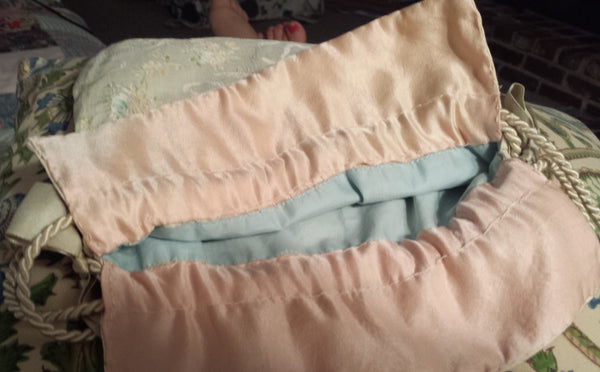
Finally, I ironed, trimmed, tied, and reattached the silk-ribbon bows that hide the drawstring ends. The silk is shattering, but since the bows are decorative and stitched in place, they should be fine for now.
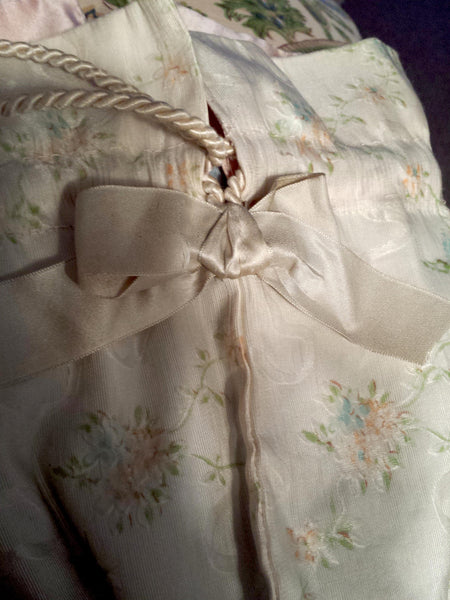
Exterior view of the completed reticule, lying flat:
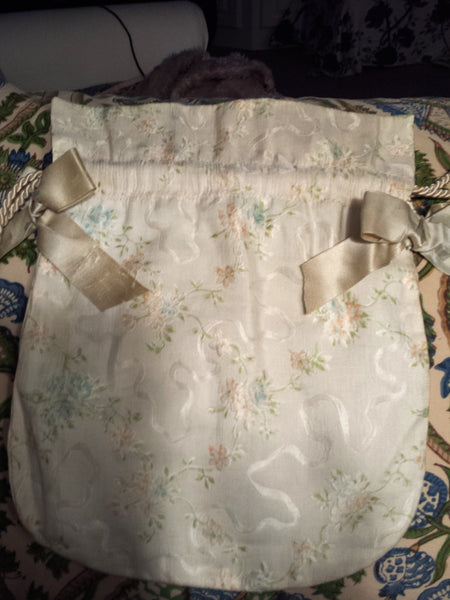
And hanging from my wrist. I can't wait to use it!


Comments
Oh no….sorry to hear you weren’t able to make the beautiful pink Victorian dress work for you, but so glad I got to see it in person!!! :-)
Can you crochet? There are tons of patterns for these type of purses in ebooks on archive.org, here’s a link to all the texts with tag “crocheting”. I’ve downloaded all of them, many from 1800s, with patterns that can be read or at least figured out (they didn’t make the instructions all the same til later). There is another title with patterns on sewing these also, Very “1800’s” style but I have too many titles to flip through to find the one that looks like yours- I know they were very popular. I recognize one just like this one from one of my ebooks. Also, learn to make perfect stitches. What helps a LOT: those magnifying glasses on a stand, it is a page-sized magnifying glass that is adjustable and on a stand like those room fans? It is almost a requirement for making teeny stitches. Reason I bring this up is, even though your stitches look fine and would be difficult to do- it would be “unacceptable” for back THEN. PS- not criticizing because I know how hard it is to do- believe me. Honestly, with the needles and thread they had to use from back then I have no idea how they stitched so well. It’s incredible. You mentioned the original lining, I wonder if that material was just what they had on hand at the time, and would have been made with stiffer material if any was to be had. It’s not like they could make a quick trip to Hancock Fabrics back in the 1800s… lol anyway- Good Job! I’m a fan, I do needlework: sewing, crocheting, embroidery/tapestries etc etc etc. In my opinion the “worst” fashion years were late 1800s and the 1980s (late 19th cent had too many flounces, too much extra fabric in weird places – 1980s women’s clothing with big football player shoulder pads and badly designed pants that flattened the posterior!)
Yep, I can crochet, but I’m not a big fan of crocheted reticules. Not sure why, exactly. I just like the fabric ones better. As for my messy stitches… it’s not a matter of skill so much as a lack of patience! That said, I’ve seen many examples of “less than stellar” stitching on antique items. The 1850s pink dress I sold recently, for example. Not everyone was equally skilled, but most everyone had to do handiwork at some point. Thanks for reading the blog and for your tips and suggestions.
